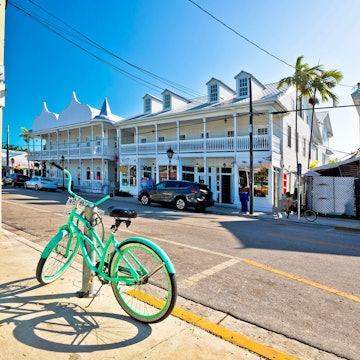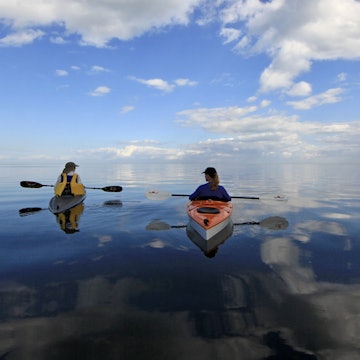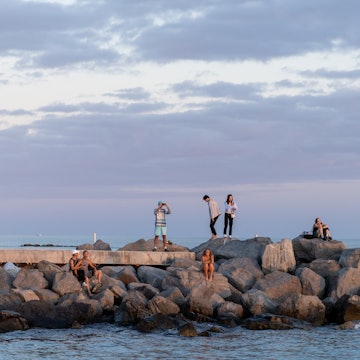
Exploring the Florida Keys responsibly: the best sites for fishing, snorkeling and education
Sponsored by

Feb 5, 2025 • 6 min read
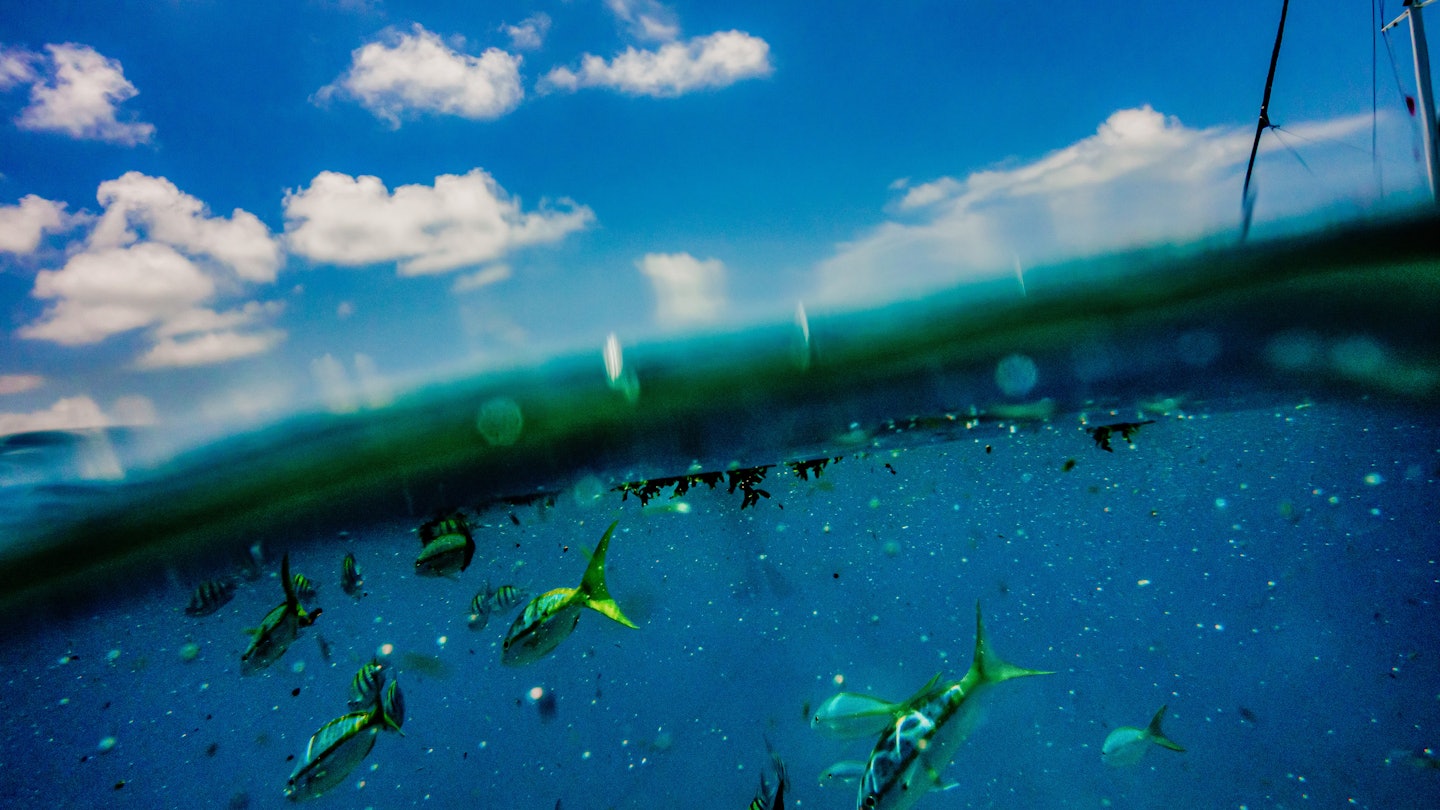
The fragile ecosystem of the Keys’ reefs require responsible exploration. Scott McIntyre
For as alluring as The Florida Keys are themselves – palm-dotted islands, each with aqua water surrounds and their own oft-quirky pizzazz – entire universes lie just below and well beyond the water’s surface.
The Florida Keys is a bucket-list destination for marine adventurers and nature lovers alike, home to Florida’s Coral Reef – the only coral reef system in the continental United States. This 360-mile trove, which stems from Dry Tortugas National Park and through the entirety of The Keys north, brims with the most vibrant marine life and a spectrum of diving and snorkeling experiences. Whether you’re an experienced diver or a casual snorkeler, The Keys promise unforgettable underwater explorations, all within an Overseas Highway hop or quick boat trek.

To make the most of a Florida Keys diving or snorkeling trip, you’ll want to book your trip with a Blue Star operator – these folks are committed to reef conservation and practices that limit the impact of tourism activities on such a precious ecosystem. And, as tempting as it may be, you’ll want to look and not touch the reefs – not only is contact harmful to the coral itself, but some of it is super-sharp and may cause an injury to you. So, don’t be enticed to take home a souvenir and, instead, opt to buy that Florida Keys souvenir in a shop instead.
With that, let’s dive right into the best seven places for exploring the Florida Keys’ coral landscapes responsibly.

1. Trek the country’s first undersea park at John Pennekamp Coral Reef State Park
Spanning 70 nautical square miles and dubbed the nation’s first underseas park, this Key Largo destination is heaven for snorkelers and divers alike. Glass-bottom boat tours give a glimpse of the stunning underwater scenery, but to truly immerse yourself, snorkeling and diving are unmatched. Coral Reef Park Company is the in-park go-to for booking, with trips into the waters to explore the Benwood shipwreck as well as French and Molasses reefs.
The Molasses Reef, for example, is a thriving coral system filled with parrotfish, moray eels and sea turtles. Another iconic John Pennekamp site is the Christ of the Abyss statue, an awe-inspiring, nine-foot-tall bronze sculpture submerged in 25 feet of water. The generally clear, shallow waters make this an ideal spot for beginners or families. When visiting and booking, morning tours are best to avoid crowds and enjoy calmer waters, especially for snorkeling.
2. Marvel at the sunken USS Spiegel Grove
For seasoned divers seeking a thrill, the USS Spiegel Grove is a must in Key Largo. This intentionally sunken, 510-foot-long shipwreck lies at depths ranging from 60 to 130ft. Fun fact: a hurricane in 2005 shifted the ship upright, creating an even wilder and only-in-The-Keys experience. With coral-clad walls and a bustling marine habitat, the USS Spiegel Grove is truly a marvel of marine engineering and nature’s reclamation.
While swimming through and peering into the ship’s compartments, you’ll see schools of barracuda and goliath grouper, among countless marine species. This dive is best suited for Advanced Open Water-certified divers due to its depth and currents. Plan dives with a guide familiar with the site’s layout for a safe and memorable experience – Rainbow Reef Dive Center and Sail Fish Scuba are trusted local go-tos.




3. Snorkel amid brain coral and sea fans at Coffins Patch
Coffins Patch, a patch reef located off the coast of Marathon, is a shallow yet rich snorkel. This 248-acre area is a regional hotspot for observing brain coral, sea fans and a variety of reef fish. Older pillars of coral remain a bonus highlight, resemblant of an almost mythical underwater forest.
Primed for snorkelers of all levels, Coffins Patch has species like tangs, wrasses and butterfly fish darting through its coral maze. The typically gentle currents and shallow waters make it an ideal spot for families or beginner snorkelers looking for a vibrant introduction to coral ecosystems. This reef is best accessed via a guided boat tour, from the likes of Captain Hook’s, departing from Marathon. For underwater photography, afternoon trips often provide better light.
4. Dive to the Vandenberg Wreck
Off the coast of Key West lies the Hoyt S. Vandenberg, one of the largest artificial reefs in the world. The 522-ft-long former military ship was intentionally sunk in 2009, transforming into a true diver’s playground. The Vandenberg’s towering radar dishes and swim-through passageways offer challenges for advanced divers.
At depths between 40 and 140ft, the site attracts barracudas, jacks and the occasional eagle ray. Coral and sponge growth are slowly but steadily transforming the wreck into a vibrant marine habitat – it’s a visible blend of human ingenuity with nature’s artistry. Lost Reef Adventures, Captain’s Corner Dive Center and Finz Dive Center specialize in dives here – make sure you have a dive light handy for illuminating darker interior passages.

5. Head low in the Looe Key Reef
Named after the HMS Looe (pronounced Lou), a British warship that ran aground in 1744, Looe Key Reef is a snorkeling and diving gem in the Lower Keys. There’s a complete reef ecosystem, from its shallow reef flat to deeper fore reef. Snorkelers are treated to sightings of angelfish, trumpetfish and reef sharks, while deeper waters entice divers with dramatic coral formations and tarpon schools. The reef’s comparatively clear visibility and diverse marine life make it a favorite for underwater photographers.
Rental equipment is available from nearby operators and resorts for those traveling light, including Looe Key Reef Resort and Dive Center.
6. Learn all about diving feats at the History of Diving Museum
A dry-land experience, the History of Diving Museum in Islamorada provides a look into humanity’s relationship with the underwater world. Ever-changing exhibits range from early diving helmets to modern scuba innovations, offering insight into how underwater exploration in the Florida Keys and well beyond has evolved.
The museum also collaborates with local dive operators to host educational snorkel and dive events on nearby reefs and wrecks, blending history with hands-on fun. Keep an eye on its calendar for a variety of visiting diving experts who regularly give presentations and guided tours, too.
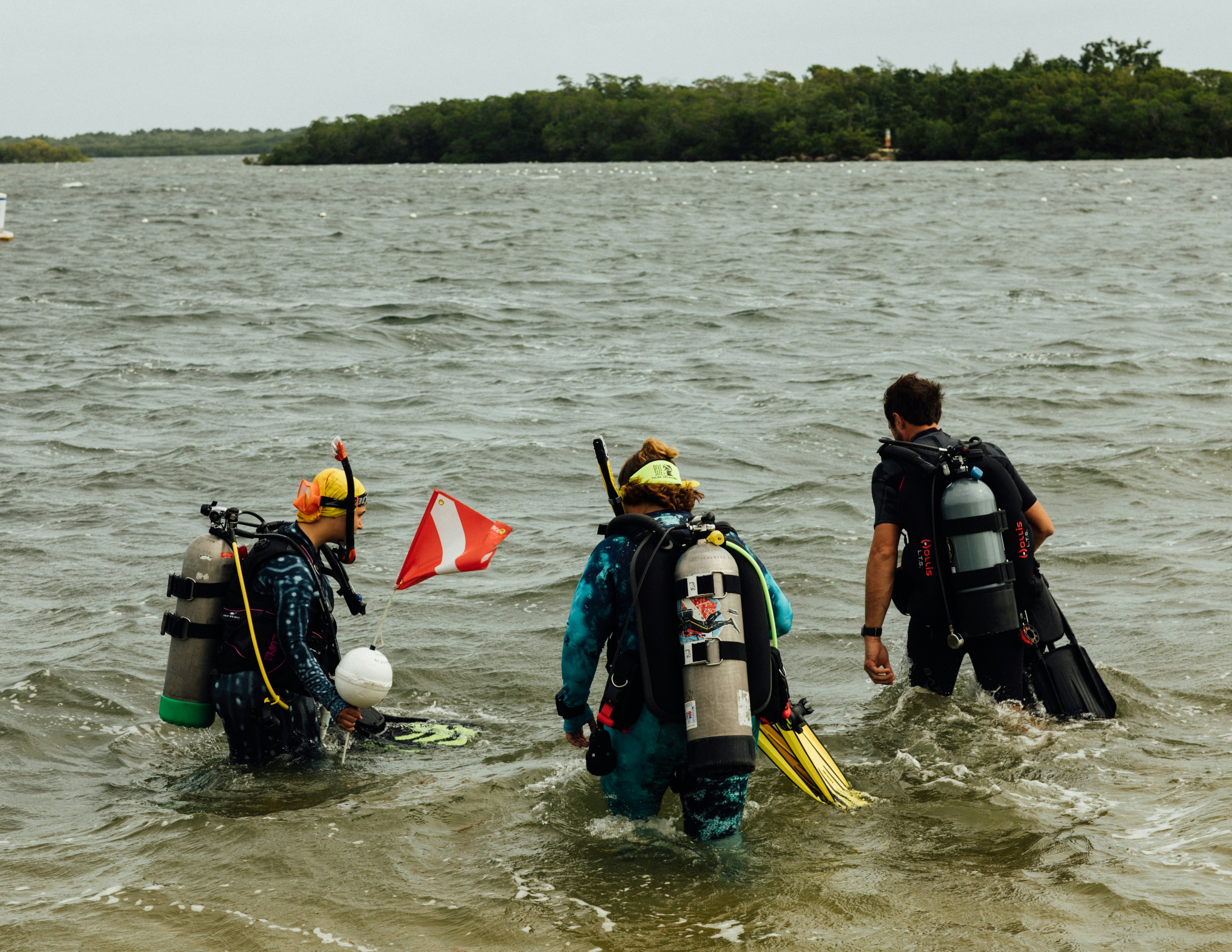
7. Gear up for sport diving in Islamorada
Known as the sport fishing capital of the world, Islamorada attracts sport divers eager to spearfish and lobster hunt in its abundant waters. This activity requires skill and knowledge of local regulations, but it offers a unique way to connect with the marine environment. Courses in sustainable spearfishing teach participants how to target invasive species like lionfish, helping to protect native reef ecosystems. Lobster divers, meanwhile, enjoy the thrill of catching spiny lobsters during the regulated season, adding a culinary reward to their underwater efforts.
Always check seasonal regulations and licensing requirements before embarking on a sport diving trip in Islamorada or elsewhere. Local operators, including Islamorada Dive Center, provide gear, guidance and educational courses for a safe and eco-centric experience.
Sponsored by The Florida Keys & Key West
As a travel entertainment and inspirational media outlet, we sometimes incorporate brand sponsors into our efforts. This activity is clearly labeled across our platforms.
This story was crafted collaboratively between The Florida Keys & Key West and Lonely Planet. Both parties provided research and curated content to produce this story. We disclose when information isn’t ours.
With sponsored content, both Lonely Planet and our brand partners have specific responsibilities:
-
Brand partner
Determines the concept, provides briefing, research material, and may provide feedback.
-
Lonely Planet
We provide expertise, firsthand insights, and verify with third-party sources when needed.








